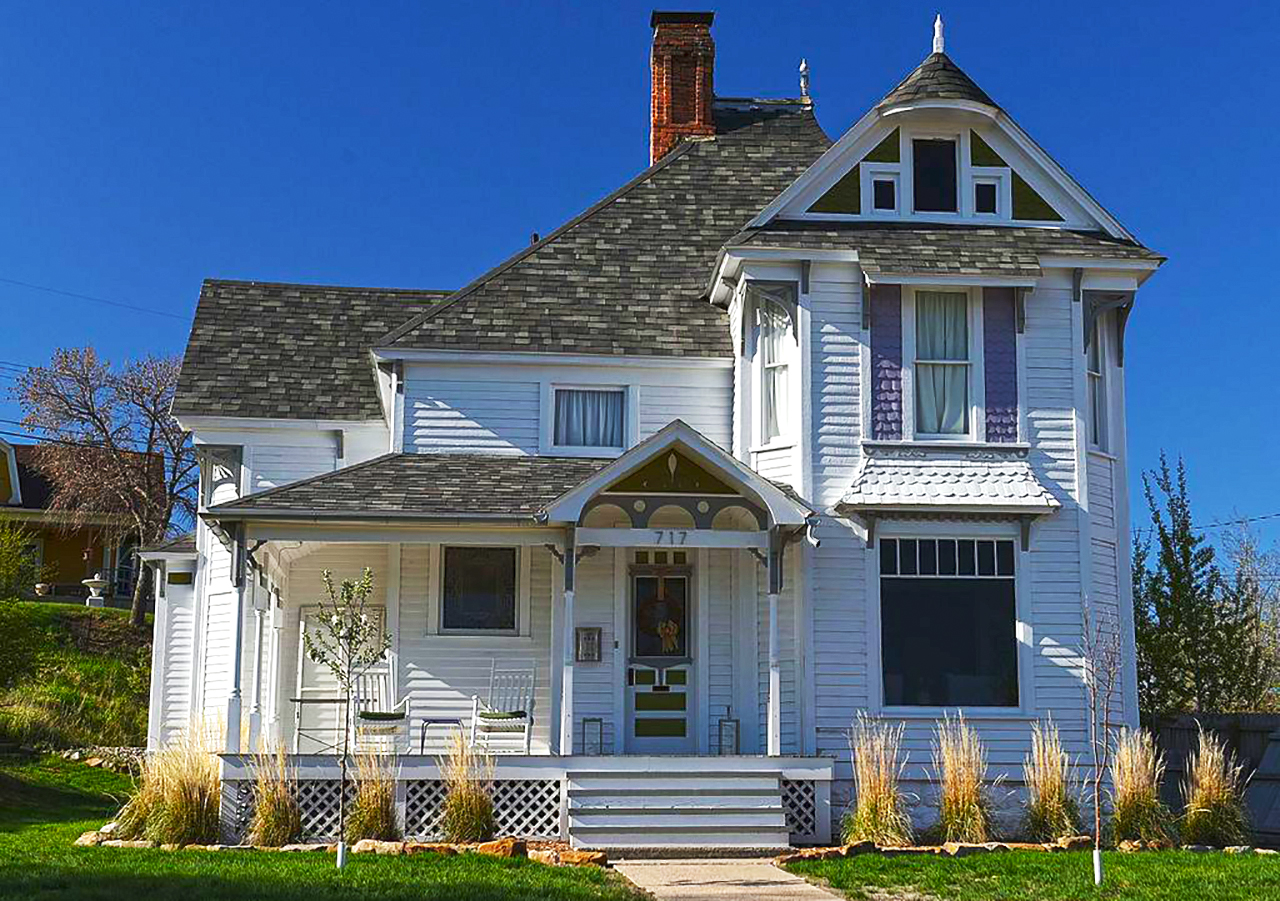
Photo: Home located at 717 South Street, in the West Boulevard Historic District. The District on the National Register of Historic Places in 1974. Image by wikipedia username:Jim Roberts, 2017, creative commons [cc 4.0], accessed July, 2021. Built circa 1892 this is an example of Queen Anne style architecture thatdominates the district.It is a two story structure with clapboard and shingled siding and a cut stone foundation. Stained glass windows, a multiple gable roof, corner windows, and an open porch with spindle supports and dentil decorative features are used.
Beginnings [1]
The history of Pennington County is long and varied. Prior to the arrival of white explorers and later settlers, the indigenous Native Americans held the land which now constitutes Pennington County as sacred. Mountain men, trappers and explorers began to visit the area in the mid-1800s. Pennington County was later created in 1875 by an act of the Dakota Territorial Legislature. From 1875 to 1897 the County boundaries changed. In 1897, the County boundaries were set, as we know them today.
The County was named in honor of John L. Pennington, the fifth governor of Dakota Territory. Sheridan was selected as the first County seat. In 1878, the first Federal Court west of the Missouri River was held in Sheridan in a log building. Shortly thereafter, Sheridan lost the County seat to Rapid City, which was booming on the edge of the Black Hills. As the placer mines around Sheridan dwindled, it became a ghost town. In 1939, an artificial lake was constructed. Today Sheridan Lake covers the site of the ghost town of Sheridan. In 1882, the first courthouse was erected in Rapid City at a cost of $12,000, where the County administration offices remain today.
Many of the towns and cities in Pennington County were established as a result of mining activities in the Black Hills. Some of the towns, such as Rapid City, Wall, Keystone, and Hill City continued to grow while others declined and ultimately disappeared. In 1886, the first railroad reached Rapid City from Nebraska. Prior to this, means of transportation was overland. Additional rail service was added in 1907 when the Northwestern and Milwaukee Railroads extended their lines across the Missouri River into Rapid City. Originally, the Black Hill National Forest started as a forest reserve in 1897 by order of President Grover Cleveland. Later in 1905, the forest reserve was transferred to the Department of Agriculture, and in 1907, was renamed as the Black Hills National Forest. The Black Hills National Forest encompasses 1,246,966 acres of which 394,820 acres are located within Pennington County. The Department of Agriculture also manages the Buffalo Gap National Grassland in eastern Pennington County, which contain 199,410 acres.
- Pennington County Planning Department, Pennington County Comprehensive Plan, 2003, Rapid City
